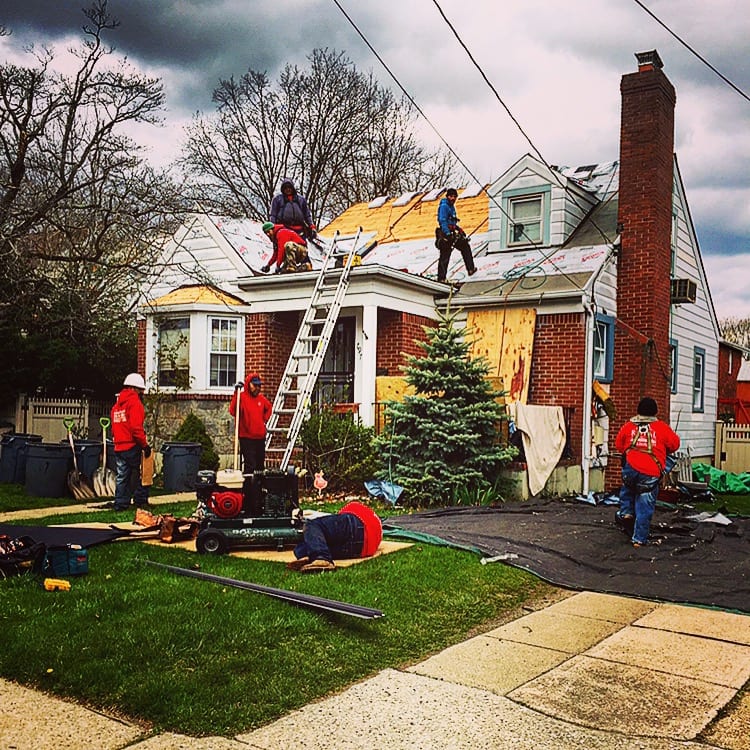
Roofing is a challenging and potentially hazardous job that requires careful attention to safety precautions. Whether you are a professional roofer or a homeowner taking on a DIY roofing project, ensuring a secure working environment is paramount. By following these safety guidelines, you can eliminate the hazard of accidents and injuries. In this article, we will explore essential roofing safety tips that will help you create a safe working environment.
Before stepping foot on a roof, it is crucial to equip yourself with the right safety gear. This includes a hard hat to protect your head from falling objects, safety goggles to shield your eyes from debris, and non-slip footwear to maintain stability on slippery surfaces. Additionally, wearing work gloves will provide grip and protect your hands from cuts or punctures. In addition to the safety gear mentioned above, there are several other items that are essential for ensuring optimal safety while working on a roof. One such item is a safety harness. A safety harness is a crucial piece of equipment that can prevent falls and protect you from serious injuries. It should be worn and properly secured whenever working at heights or on steep roofs. The harness should be attached to a stable anchor point, such as a roof anchor or a sturdy structure. Falls are a significant risk when working at heights. Always use fall protection measures
Before starting any roofing work, it is crucial to conduct a comprehensive and systematic inspection of the roof and its surrounding areas. This inspection serves as the foundation for identifying potential safety hazards and taking appropriate measures to mitigate them. Examine the overall structure of the roof, paying attention to signs of sagging, unevenness, or compromised integrity. Look for any signs of rot, decay, or insect infestation in the wooden components. Ensure that the roof structure is capable of supporting the weight of workers and materials without risk of collapse or structural failure. Inspect the roofing materials for any signs of damage, deterioration, or loose components. Check for missing shingles, cracked tiles, or curled edges. Damaged materials can pose a safety hazard, especially during high winds or heavy rainfall. Replace or repair any compromised materials to ensure the roof's integrity
Using the right equipment is crucial for maintaining safety while working on a roof. Ensure that the ladder or scaffolding you use is sturdy, in good condition, and properly secured. Place the ladder on a stable surface, extend it beyond the roofline, and secure it at the top to prevent it from slipping. Similarly, when using scaffolding, ensure it is properly assembled, stable, and equipped with guardrails to prevent falls.
Weather conditions are a crucial factor to consider when it comes to roofing safety. Adverse weather can immensely increase the chance of casualties and damages. It is essential to be aware of the weather forecast and avoid working on a roof during inclement conditions such as strong winds, heavy rain, snowfall, or storms. One of the primary concerns during adverse weather is the increased slipperiness of roof surfaces. Wet surfaces can become extremely hazardous, as they reduce traction and make it easier for workers to lose their balance and fall. This is particularly true for roofs with steep slopes or surfaces covered in moss, algae, or other substances that become slippery when wet. Even a small amount of moisture can make the surface treacherous, posing a significant risk to the safety of workers.
Roofing materials can be heavy and awkward to handle. It is essential to use proper lifting techniques to avoid strains or injuries. Lean your knees, keep your back straight, and lift with your legs instead of your back. If a material is too heavy to lift alone, seek assistance from a colleague or use mechanical lifting equipment to prevent unnecessary strain.
While working on a roof, make sure to secure all tools and equipment to prevent them from falling and causing potential harm. Use tool belts or lanyards to keep your tools within reach, eliminating the need to lean over the edge of the roof. Additionally, use caution when handling power tools, ensuring that cords are properly secured and kept away from sharp edges or potential tripping hazards.
Falls are a significant risk when working at heights. Always use fall protection measures such as harnesses, safety nets, or guardrails when working on roofs. Make sure the fall protection equipment is in good condition, properly fitted, and regularly inspected. Train yourself and your team on proper fall arrest techniques to minimize the risk of injury.
Roofing work requires physical exertion and can be especially challenging during hot weather conditions. To ensure your safety and well-being, it is important to take proactive measures to stay hydrated and manage the impact of heat on your body. One of the most critical aspects of working in hot weather is maintaining proper hydration. Dehydration can lead to exhaustion, dizziness, and inadequate cognitive function, which can boost the risk of accidents. It is essential to drink plenty of water throughout the day, even before you feel thirsty. Keep a water bottle easily accessible and take regular sips to replenish fluids lost through sweating. Avoid exorbitant consumption of sugary or caffeinated drinks, as they can chip in to dehydration. Recognizing the signs of heat-related illnesses is crucial for early intervention.
Conclusion
Roofing work can be challenging and dangerous, but by following these safety tips, you can ensure a secure working environment. Prioritize fall protection measures and take regular breaks to stay hydrated and avoid fatigue. By prioritizing safety, you can protect yourself and your team from accidents and injuries while working on roofs.
To get a professional roofing crew to handle your roofing needs contact 68-38 Main Street #2 Flushing, NY 11367 (718)489-4009 https://www.kingsqueensroofing.com